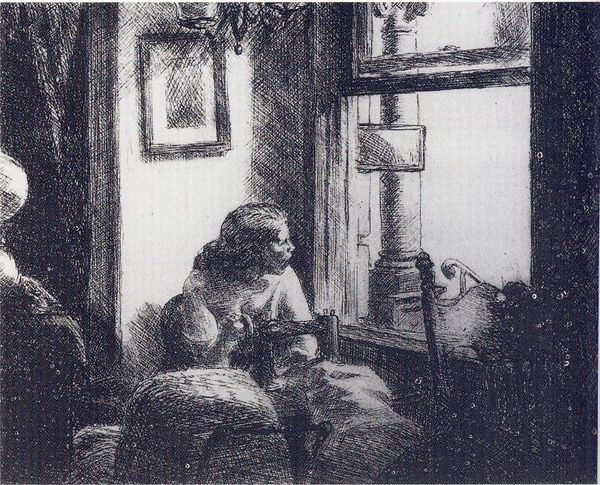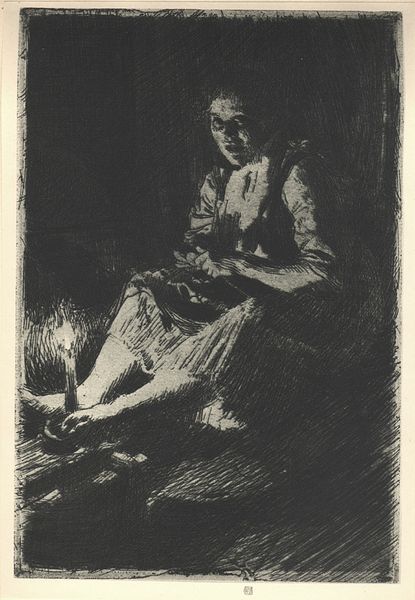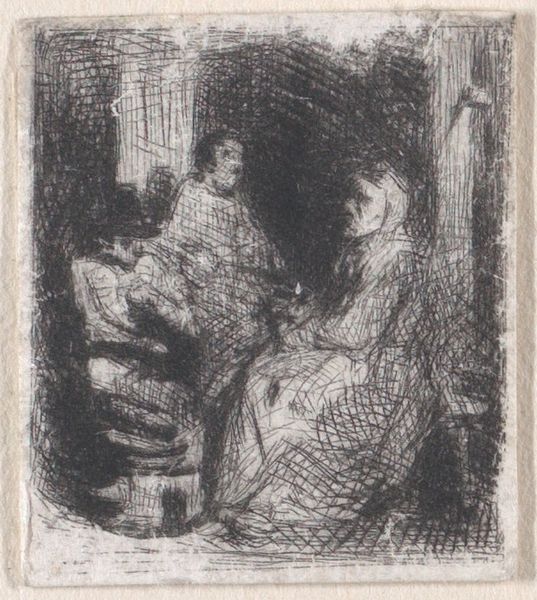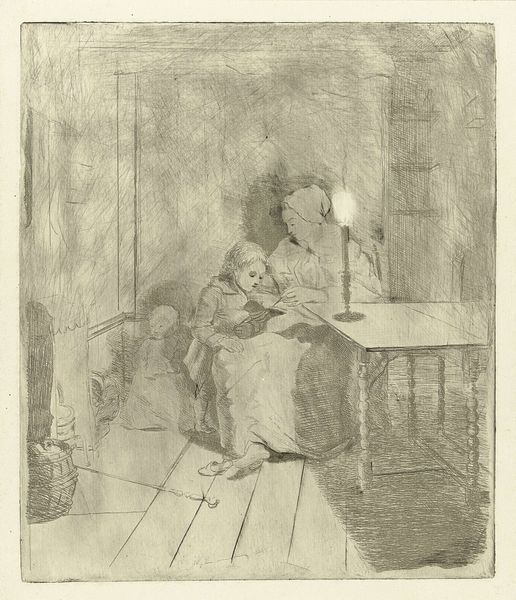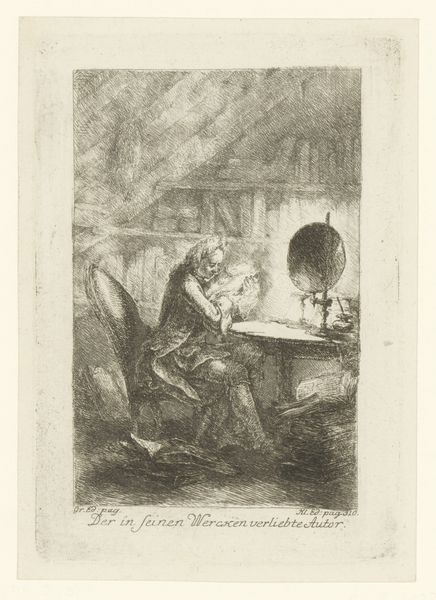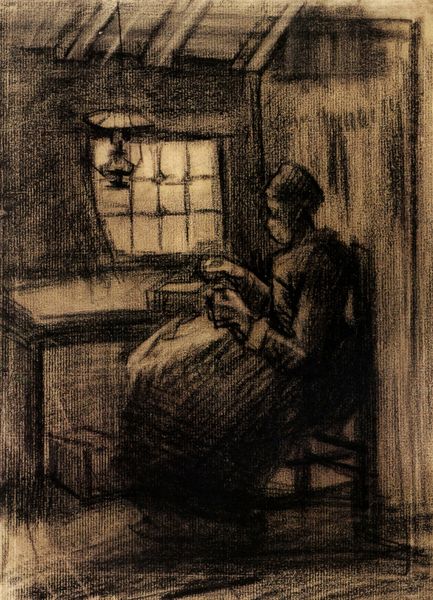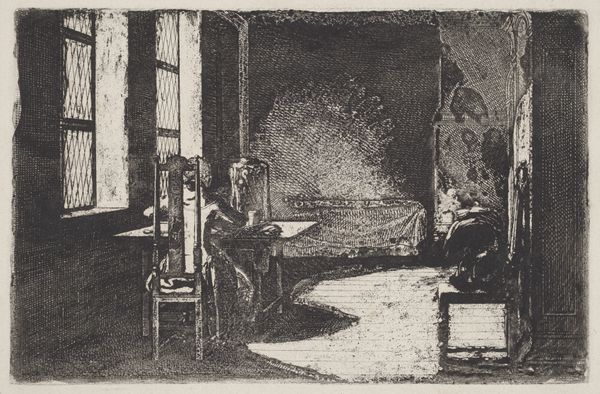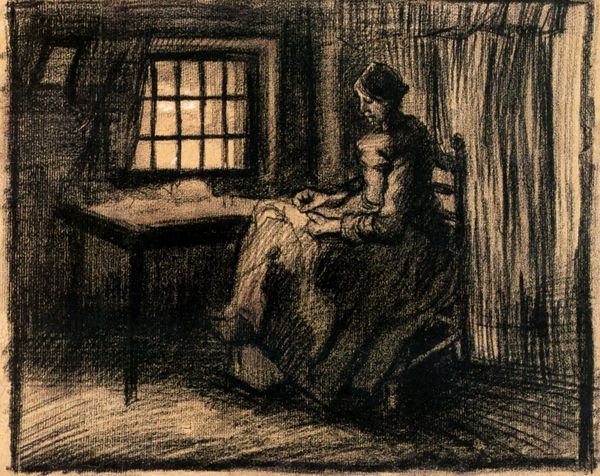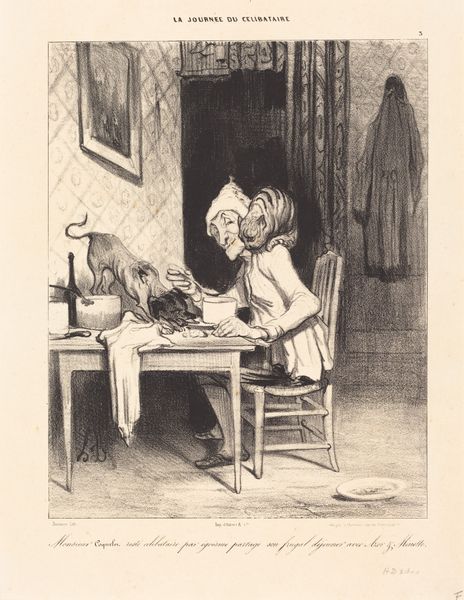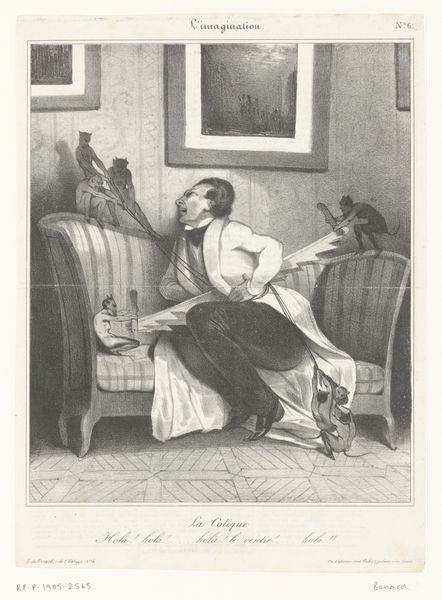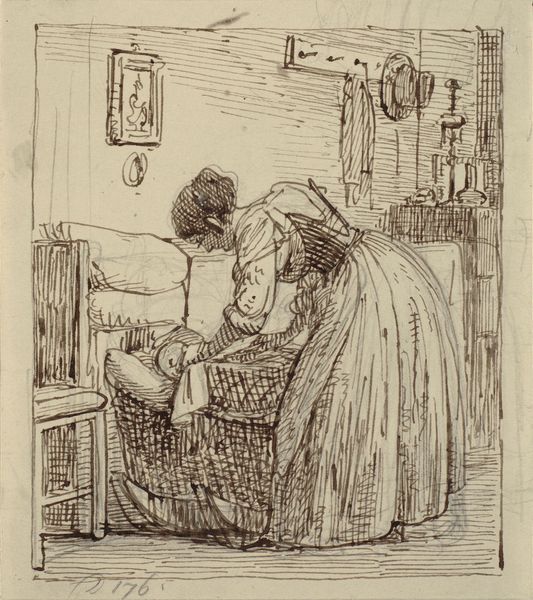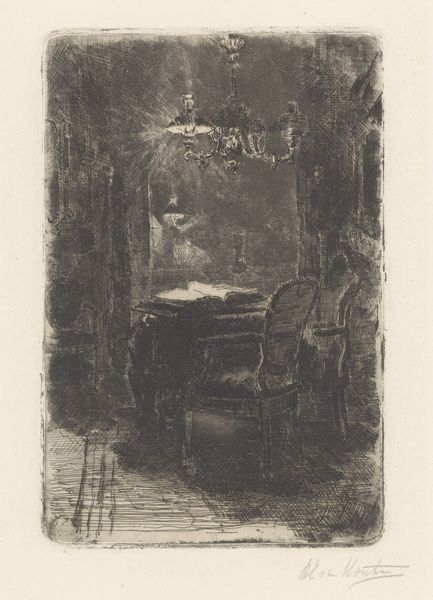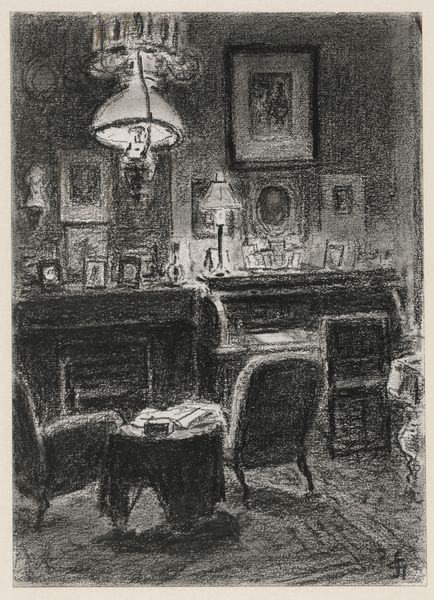
drawing, print, etching, intaglio
#
portrait
#
drawing
# print
#
etching
#
intaglio
#
genre-painting
#
modernism
#
realism
Dimensions: plate: 20 × 22.54 cm (7 7/8 × 8 7/8 in.)
Copyright: National Gallery of Art: CC0 1.0
Editor: Here we have Edward Hopper's "East Side Interior," an etching from 1922. It feels like a quiet, almost melancholic snapshot of urban life. What can you tell us about this piece? Curator: Hopper's work, especially this etching, speaks volumes about the solitude within urban settings. Notice how the figure is positioned near the window, seemingly distanced from the world inside and outside simultaneously. Editor: There is definite tension there. She's looking out, but there's no interaction. Curator: Exactly. And considering this was made in the 1920s, during significant social shifts, one might ask: what does it mean to be a woman gazing outward at a rapidly changing city, perhaps feeling both connected and disconnected from its pulse? Does it suggest a sense of limited agency, a longing, or perhaps quiet observation? Editor: That makes me rethink her gaze. It felt passive, but now it could be defiance? Curator: Precisely. It invites us to examine the historical context, the rise of women in the workforce post World War I, yet also their continued confinement to domestic spheres. Hopper presents us with a complex individual navigating these contrasting pressures. How does this contextualisation shift your reading of the piece now? Editor: I see how historical context informs artistic interpretation. I assumed she was sad but maybe she's processing the possibilities around her? Curator: Indeed. Hopper urges us to critically examine the intersecting identities and social forces shaping everyday lives and, ultimately, what art can communicate about these vital complexities.
Comments
No comments
Be the first to comment and join the conversation on the ultimate creative platform.
